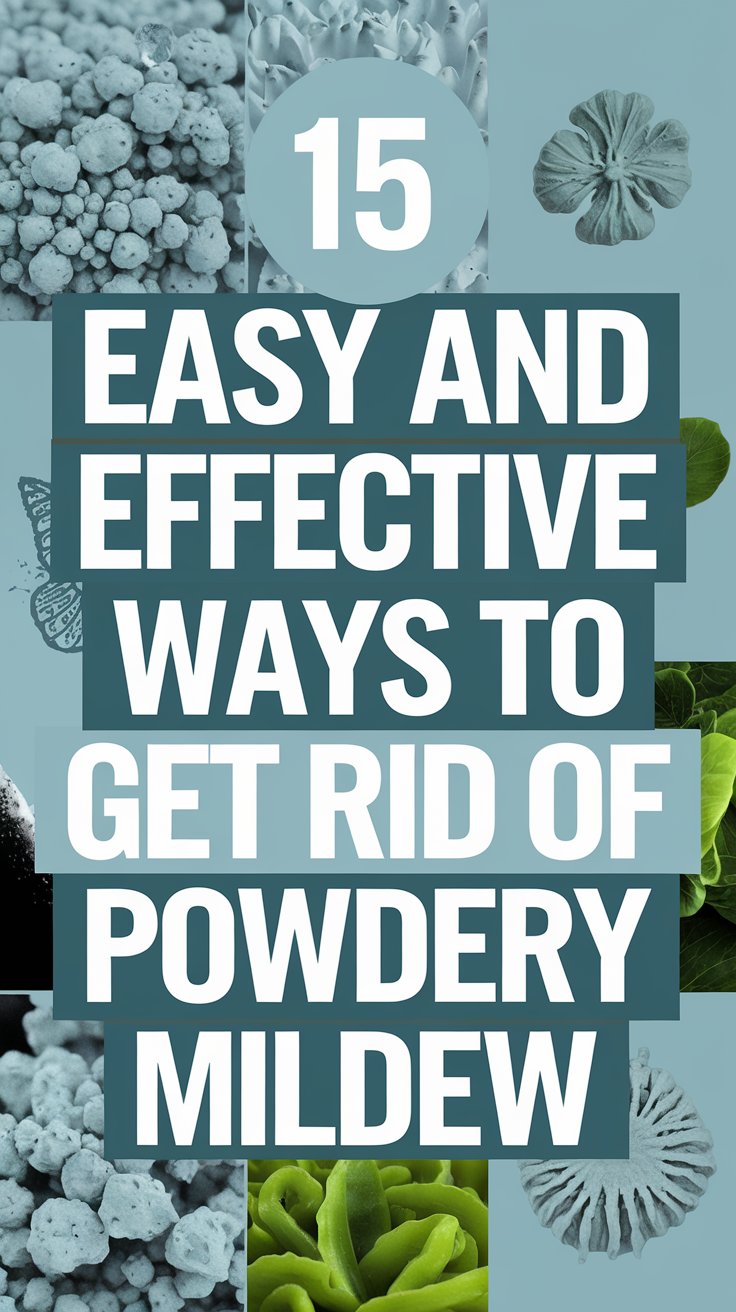Powdery mildew is a common fungal disease that affects a wide range of plants, including vegetables, fruits, and ornamental plants. If left untreated, it can lead to severe damage, affecting both the health of your plants and the beauty of your garden. Fortunately, getting rid of powdery mildew doesn’t have to be a daunting task. In this article, we will explore 15 easy and effective ways to combat this pesky fungus and restore your plants to their former glory.
Increase Air Circulation
One of the simplest ways to combat powdery mildew is to ensure that your plants are spaced adequately. By promoting air movement around your plants, you can help reduce humidity levels close to the foliage. Dry air makes it much more difficult for powdery mildew to thrive, so consider rearranging tightly grouped plants to allow for better airflow.
Water Wisely
Timing your watering can make a significant difference in preventing mold growth. Water your plants in the morning instead of the evening. This approach allows the foliage to dry out during the day, which helps lower the chances of mold taking hold.
Use Natural Remedies
For those who prefer natural solutions, creating a mixture of water and baking soda can be effective. Simply take 1 tablespoon of baking soda and mix it into a gallon of water, then spray it onto the affected plants. This solution works by raising the pH on the leaf surface, making it a less hospitable environment for fungi.
Neem Oil
Neem oil is another fantastic natural remedy that also acts as a fungicide and pesticide. To use it, mix the neem oil with water according to the package instructions and spray it on your plants. This can help eliminate powdery mildew and protect your plants from further infestations.
Milk Spray
Have you heard about using milk as a treatment? A mixture of milk and water—1 part milk to 9 parts water—when sprayed on the plants, can potentially help control powdery mildew. The proteins in milk have antifungal properties that might just do the trick.
Prune Affected Plants
If you notice any leaves or stems showing signs of powdery mildew, it’s important to act quickly. Remove and dispose of these affected areas to prevent the fungus from spreading to the healthy parts of your plants. This pruning can significantly help with overall plant health.
Apply Sulfur
Garden sulfur is another effective treatment option. You can either dust it directly onto leaves or mix it with water and spray it according to the product instructions. Sulfur helps to tackle powdery mildew and can be included as part of your preventive measures.
Increase Sunlight Exposure
Ensuring your plants are getting enough sunlight is crucial, as powdery mildew loves shady environments. If you find that some of your plants are blocked by others or by garden structures, consider trimming them back to maximize sunlight exposure.
Use Potassium Bicarbonate
Similar to baking soda, potassium bicarbonate is another option for disrupting the growth of powdery mildew. Mix it with water and spray it onto the affected areas of your plants to give them extra protection against this common fungus.
Choose Resistant Varieties
When selecting new plants for your garden, consider looking for disease-resistant varieties. Some plants have been bred specifically to withstand powdery mildew, drastically reducing the likelihood that you’ll encounter this pesky problem.
Keep Your Garden Clean
A clean garden is a healthy garden. Regularly removing debris, fallen leaves, and other organic matter can diminish places where fungal diseases can harbor and spread, helping maintain a healthy growing environment.
Maintain Soil Health
Healthy plants come from healthy soil. Ensure that your garden soil is well-aerated and enriched with organic matter. This promotes strong plant growth and makes your plants less susceptible to diseases like powdery mildew.
Mulch Your Garden
Applying a layer of mulch can also benefit your plants. It helps regulate soil moisture and temperature, which reduces the likelihood of powdery mildew development. Plus, it looks great!
Fungicidal Sprays
If you find that natural remedies aren’t quite doing the job, you might consider commercial fungicides that are specifically labeled for powdery mildew. Just remember to follow the manufacturer’s instructions carefully to achieve the best results.
Monitor and Act Early
Last but definitely not least, keep a vigilant eye on your plants. Monitoring for early signs of powdery mildew can make all the difference. If you see it, act quickly to treat it before it spreads and causes further damage. Regular observation is key!
Conclusion
Powdery mildew can be a frustrating challenge for gardeners, but with the right strategies, it is manageable. By following these 15 easy and effective methods, you can protect your plants and keep your garden thriving. Remember, prevention is key, so regular monitoring and maintenance will go a long way in safeguarding your plants from powdery mildew. Implementing these methods not only helps eliminate existing issues but also fosters a healthier, more resilient garden environment. Happy gardening.








